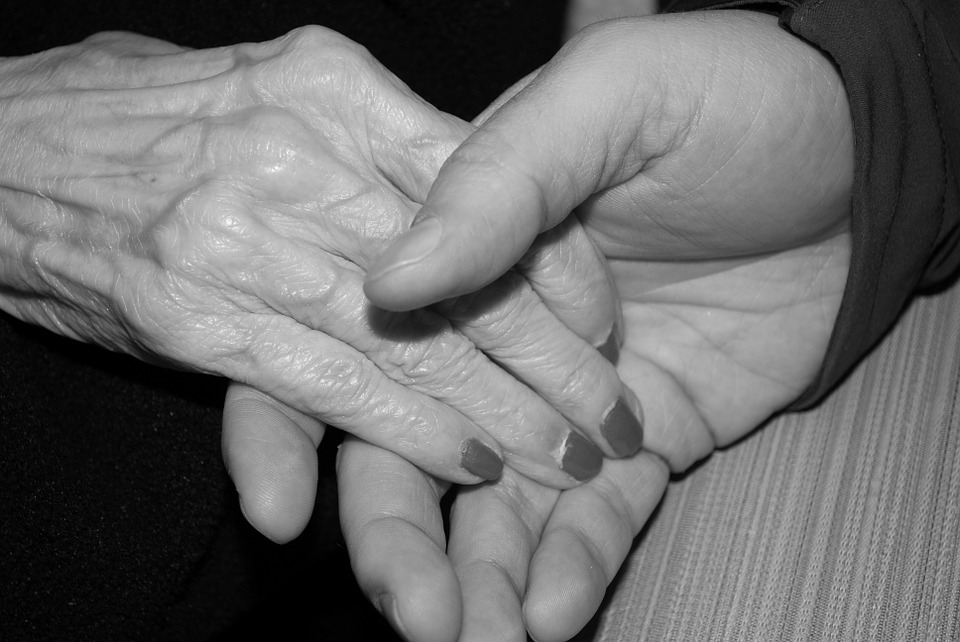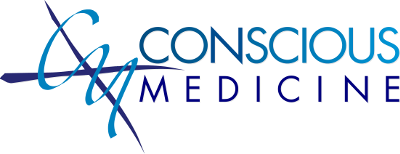Mom and Medicine: What Worries this MD.

Everyone’s life is a unique, evolving story. This is mine.
On April 15, 2016, my mother had a sudden rupture of a brain aneurysm. Prior to this she had never had any warning symptoms and had never been hospitalized. In about one hour she went from a master cook, gardener, and active caretaker of three young grandsons to being unresponsive.
There are many doctors in our family: I’ve been a gastroenterologist in solo private practice for over 10 years now. My father and brother are both cardiologists, my sister is a pediatric dermatologist, my sister-in-law is a pediatrician, my father-in-law is a rehabilitation physician, and my wife is a podiatrist.
In spite of our “insider” positions in the world of American medicine, we were overwhelmed. There is nothing that throws you headfirst into the whirlpool of the healthcare system like being the loved ones and medical decision makers of a critically ill patient. And if it was difficult for us as physicians to navigate around our healthcare system, I can only imagine how much more difficult it is for our patients and their loved ones.
You know the phrase, “the fog of war”? I’ve called this “the fog of healthcare.” What we’ve experienced in this trial is the best of what American healthcare has to offer — and its systemic flaws. Flaws that I think will only worsen with what our government currently has up for proposal.
The proposal stems from a law passed last year by Congress called the Medicare Access and CHIP Reauthorization Act (MACRA). In short, the policy rule aims to change fundamentally how Medicare pays for medical care. And generally, whatever Medicare decides, the private payers eventually follow. So this rule will influence the entire financing of healthcare in America.
The premise is that we should be paying for healthcare quality over quantity, through evidence-based metrics that standardize high-quality healthcare. And that we should use integrated electronic health record systems that help track those metrics.
Sounds good, right?
But the fundamental flaw of the proposed rule is how it chooses to measure quality in healthcare.
Now please don’t mischaracterize me. I consider myself an evidence-informed physician. And I’ve had an electronic medical record (EMR) system since Day One of starting my practice. I’m not some wistful advocate for going back to the medicine of yesteryear.
I also recognize that the desire to measure and standardize the practice of medicine is actually part of a larger trend that champions the promise of “Big Data” analytics to revolutionize many industries. It’s happening in sports, education, finance, and start-ups. Medicine is just a latecomer to this party.
But I have three main concerns.
- Can we coercively apply population-based conclusions (which are themselves flawed, as researchers like John Ioannidis have shown) to the care of a unique patient, in a unique environment, with a unique context?
- Are the things we’re going to measure, and hold physicians accountable to, accurate external indicators of a patient’s health?
- Most importantly, are we actually measuring the totality of the patient’s health? Where are your metrics for the interiors of illness? Have we thought at all about how we can measure that? (And no, Press Ganey patient satisfaction scores don’t cut it).

Thrust over to the other side of the patient-doctor relationship with Mom’s brain hemorrhage, we as doctors got a deeper perspective on what is good — and not-so-good — in our healthcare system.
The not-so-good: The move to codify medicine is turning practicing physicians and trainees more into robots than critically thinking caregivers. Evidence is being indiscriminately applied with less regard for individual context and the humanity inherent in the practice of medicine. The EMR reigns supreme, where imprecise information once keyed in gets propagated downstream and distorts the actual happenings of the patient. And we’re being pushed into acting more and more as case managers than as physicians. I didn’t want a case management disposition on Mom. I wanted a doctor.
The good: Among many, two experiences come to mind.
One is the attending physician of the neurocritical ICU. Here was someone who was exceptionally well-trained, aware of all the neurocritical literature, and clearly the alpha dog of his team. I am sure he would be stamped “high-quality” by some proposed MACRA rule. But what impacted me about him was that he was evidence-informed — not evidence-enslaved. He treated Mom as an ultimately unmeasurable human being, not a data point. And when she was gurgling during rounds and needed suctioning, he stopped rounds and suctioned her himself. He could have called the respiratory therapist to do it, but he chose to get down and dirty himself. He touched Mom in the intimate way only a healer can do. And in doing so, he touched me.
The other is what happened on perhaps the worst night of our lives. My brother and I were given a very poor prognosis for Mom from a well-meaning physician, based on an imaging study we had asked him to interpret. We were told that she would be essentially in a “locked-in” state, like a Sleeping Beauty with the added curse of not being able to move anything at all in the brief periods she might be awake.
We were considering for Mom a procedure the next day to relieve her of possible cerebral vasospasm. As my brother and I contemplated whether to follow through with this procedure or start considering comfort care, I called the radiologist who would be doing the procedure at our hospital. He knew me and my father well, who had been practicing at our hospital for about as long as he had. I knew this procedure wasn’t the norm for the radiologist, though he was comfortable doing it. I also knew he had already spoken to the physician who had given us his bad news.
In tears, I asked our radiologist the question that gets asked of us all as physicians. If this were your Mom, what would you do? He paused for a moment and said with his heart, “I would do it. I’d feel I did everything I could do for Mom. You’re a good kid. And your Mom is as beautiful as an angel. I’ll do the procedure. I want to honor you, and your Dad.”
I will forever hold that conversation in my heart. But there’s no current metric I’m aware of that captures that conversation. That precious physician will be “measured” in my heart, and in the hearts of the thousands of other patients whose lives he’s touched.
To be clear: I am not against metrics in medicine. But we need to consider much more deeply how we as a profession and a society want to define those metrics. Quality must be measured not only in what is true, but what is good, and what is beautiful. The proposed MACRA rule is woefully inadequate in measuring such quality. And I fear it will further destroy what is true, good, and beautiful about the practice of medicine.

The foundation of medicine is the patient-doctor relationship. That relationship is sacred and should be inviolate. On the inside of the patient-doctor relationship is trust. And on the inside of trust is love. Find a way to measure love in medicine, and I’m all in. It shouldn’t take 962 pages of regulations to do it.
In the meantime, anything that honors the unique expression of love and healing that is the patient-doctor relationship, I am choosing to promote and preserve. Anything that doesn’t, I am choosing to disturb and discard. Because without the sacred patient-doctor relationship, medicine is lost. And I feel the pending reforms could undermine the patient-doctor relationship.
It turned out that the prognosis we were given on Mom wasn’t accurate. She’s on the slow road to recovery. And her care in so many ways has been amazing. What’s helped her are healthcare professionals, grounded in evidence without being constricted by it, practicing the art and science of medicine with an open mind and an open heart.
And most fundamentally, with love.

WOW,i am a tad speechless. Am also extremely moved,and so very impressed. This touched me on so many levels, having been a patient quite a few times,and dealing with medical costs as I have mostly been self-pay. Within last few years I have dealt with a ton of different doctors on my Mom’s behalf (I also have a brother who is an ER physician). We have had longtime doctors that have said they were having more restrictions and regulations put on them,having to see so many patients a day,only so much time allowed with each patient-it was becoming more business than medicine. So,what you have written and voiced really does resonate with me, and is not only refreshing but hopeful.
I am a patient of yours,and never thought I could respect you more than I already did. I look forward to growing with you.
Thank you for these kind words. I am a conduit for the change in health care you will demand. I’m your lever. So I look forward to growing with you.
“Totality of a patient’s health…”
I am responding to this blog post from my own personal perspective and experiences with the medical community over the past two years.
I am a teacher librarian by profession. I love books and I am surrounded by thousands of them as I manage two elementary school libraries. Books have been my teachers all my life. There is much wisdom that can be gained from the inside pages of a good book. So as I was reading this article, I couldn’t help making connections between what Dr. Julapalli refers to as “totality of a patient’s health” and one of my favorite stories of all times.
The Seven Blind Mice is a lovely take on an ancient Indian fable of the Blind Men and the Elephant. In the story seven blind mice (each of a different color) attempt to figure out a mysterious shape near them. Each day one of the mice sets out to explore the “strange something” and reports back with his findings.
On Monday, the red mouse goes to investigate and reports to the group that the “strange something” is a pillar.
On Tuesday, the green mouse returns from his encounter with the “strange something” and declares to the group that it is a snake.
On Wednesday, the yellow mouse goes to explore for himself and returns to share what he has learned: the “strange thing” is a spear.
On the next three days of the week, the purple, the orange, and the blue mice respectively set out to learn more about the “strange something,” each returning with a different finding. To the purple mouse, the “strange thing” is a cliff; to the orange mouse, it is a fan; and finally, to the blue mouse, it is a rope.
While the first six mice begin to argue amongst themselves about the identity of the “strange something,” the seventh and the last mouse, a white one, leaves to search the truth for herself.
She encounters the thing near the pond and at once runs up one side of it and down the other side. She investigates the thing from end to end. After exploring the thing in its entirety, she declares that yes, the thing is as sturdy as a pillar, as supple as a snake, as wide as a cliff, as sharp as a spear, as breezy as a fan, and as stringy as a rope…but altogether, in totality, the “strange thing” is an ELEPHANT!!!
Why was the white mouse successful in correctly solving the puzzle where her brethren had only focused on isolated pieces?
Who knows? Maybe she had made a connection between bits and pieces of information that the others had brought back to the group. Maybe it was intuitive even. Whatever the “how,” she was the only one looking at the “strange thing” in totality, not just as isolated parts.
I believe the practice of medicine today as experienced by a majority of people is akin to the experience of the seven blind mice with the elephant in the story. A protocol-driven approach to treatment of patients needs to be counterbalanced with patient-centered integrated care where the patient is seen as a whole and in totality rather than in separate malfunctioning parts that require only pill services.
I think there is plenty of blame to go around for why the system is failing the patient and the care provider. Part of the blame, surely, lies with the patient—not shouldering personal responsibility for the state of his own health, not educating himself on symptoms, diagnosis and treatment of his condition, engaging in behaviors that increase health risks, etc; however, the biggest share, I believe, goes to a system that enables bad patient behavior, mismanages patient information, doesn’t advocate for health literacy, lacks price transparency, and rewards the providers with quantity over quality of care.
Quality of care requires that the doctor spend adequate time with his patients and get to know the whole patient, in totality. Quality of care requires that the doctor’s plan for patient care not be micro-managed by a one-size-fits-all, crisis-driven bureaucracy. Quality of care means medicine with a heart. Quality care means there should be an emphasis on disease prevention rather than on treatment alone. Unfortunately, just like other institutions managed by a bureaucratic body—namely “government,” absence of common sense and fiduciary duty to the consumer create a toxic environment where all the wrong things are incentivized and mediocrity is the name of the game.
So what is the cure? I think the cure starts with the consumer (the demand) side of the health care equation. The consumer must demand change. But demanding change requires that the consumer be an educated stakeholder in healthcare. And whose job is it to empower the consumer in making sound healthcare decisions? Whose job is it to make sure patients are armed with information that helps them better manage their own care?
Patient education or empowerment, then perhaps, might be the proverbial elephant in the room.
This is exactly correct on many levels. In fact, this is THE purpose of our endeavor: to lay the groundwork to help YOU, the consumer of health care, demand change. We see this as our responsibility, to empower you. Because you deserve better. We all do. And it won’t happen without you. So stay tuned…
So well said, Nadereh. Thank you for sharing.
I am so moved by this story of your mother and the experience of it! I came across you on Daily Good. org. I have been thinking about writing down my thoughts of the changes in the medical arena (thinking about retirement) and I came upon your views and your website. My husband and son are in the medical field and I have been in Hospice for 12 years. Remembering the “old” docs in town and how their lives were taken up in the intimate care of their pts, their communities, and their staff who stuck by them from day 1 of the doctors practice is something we no longer see. What changes since then and I don’t think we’ve gotten better in treating the whole pt (except in critical care!) The hours of my day after seeing pts are mostly taken up with charting in hopes of keeping up with the endless regulations with different governing bodies who seem to “call the shots”. This saddens me tremendously and I wonder if the medical system is about to implode. I know there has got to be a change and perhaps you will be at the forefront of that change!
I thank you profoundly for your views and the work you are doing to help medical consumers! 🙏
I get it! Thank you so much for sharing about your mother! I am a registered nurse who thought I knew what To Do when my mother was diagnosed with cancer. BUT I didn’t know what I didn’t know. I am also a nurse case manager who decided to assist others (now having a different vision of the process) navigate this health care system. That coupled with now learning Fx Nutrition I will others through a different lens to better manage our health Truly appreciate what you stand for and so! Inspiring